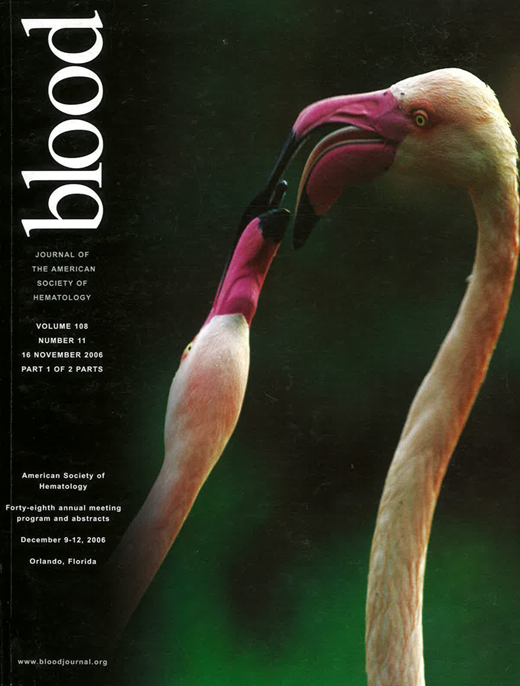Abstract
Recent studies demonstrated that ZAP-70 is an important prognostic factor in CLL. Patients (pts) who were ZAP-70 positive were reported to have an early time to treatment failure and a shorter survival. We determined the effect of ZAP-70 status on the outcome of NST in pts with advanced relapsed CLL.
Between 1999 and 2005, 39 pts were enrolled, ranging in age from 34 to 70 years (median, 57 years). All pts had recurrent advanced CLL and had been previously treated with fludarabine-rituximab-based regimens. Each pt had received 2 to 8 (median, 3) chemotherapy regimens. Thirty-four pts (87%) had active disease at the time of study entry. Using immunohistochemical techniques on marrow biopsy samples, we determined that 25 pts were ZAP-70 positive, 13 were ZAP-70 negative, and 1 was of indeterminate status. All pts received a preparative regimen of fludarabine (30 mg/m2 daily for 3 days), intravenous cyclophosphamide (750 mg/m2 daily for 3 days), and high-dose rituximab, as previously reported. Thirty-five pts underwent allogeneic transplantation from a sibling donor and 4 from a matched unrelated donor.
The median number of CD34+ cells infused ranged from 1.96 to 6.6 x 106 /kg (median, 4.7 x 106 /kg). Neutrophil counts recovered to > 0.5 x 109/L at a median of 10 days after NST. Donor cells failed to engraft in 1 patient. The median percentage of donor T cells at day 30 was 68% (range, 0%-100%), and increased to 93% and 100% at days 90 and 180, respectively (P < 0.001).
Fourteen pts experienced disease progression after transplantation and required immunomanipulation. The last progressions within the whole group and among those patients who were ZAP-70 positive occurred at 23 and 18 months, respectively after transplantation. By multivariate analysis, chemorefractory disease (P = 0.01) and having mixed T cell chimerism at day 90 (P = 0.02), but not ZAP-70 positivity, were identified as the most significant factors for progression after transplantation. Of the 14 pts who required immunomanipulation after transplantation, 6 experienced a complete response (CR) and 1 had a partial response. Responses occurred after therapy with rituximab and donor lymphocyte infusion (DLI) (median, 1 dose of 1 x 107 CD3+/kg). Overall, of the 38 evaluable patients, 27 (71%) experienced a CR. The incidence of acute grade II-IV GVHD was 45%, whereas the incidence of chronic extensive GVHD, pre- and post-DLI, was 58%.
With a median follow-up time of 27 months (range, 4–80 months), the estimated overall survival (OS) and current progression-free survival (CFPS) rates at 4 years was 48% and 44%, respectively. Pts who were ZAP-70 positive had a median follow-up period of 41 months (range, 5–80 months). Their estimated OS and CPFS rates at 4 years were estimated to be 56% and 53%, respectively. These results indicate that NST can overcome the negative prognostic feature of ZAP-70 expression in advanced CLL.
Disclosure: No relevant conflicts of interest to declare.
Author notes
Corresponding author

